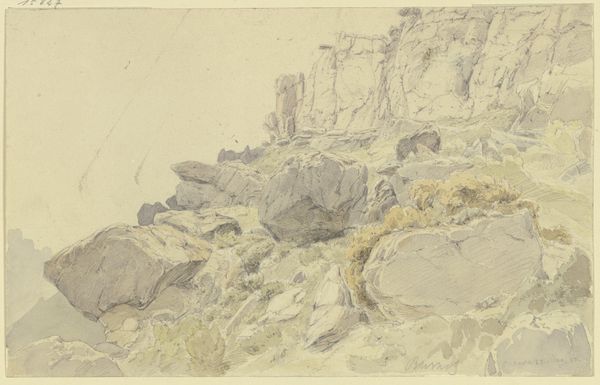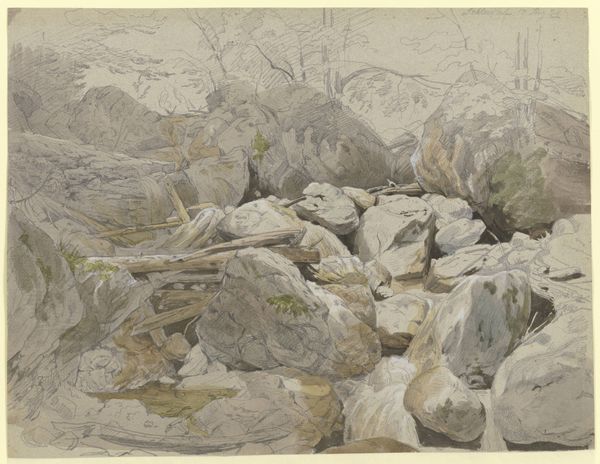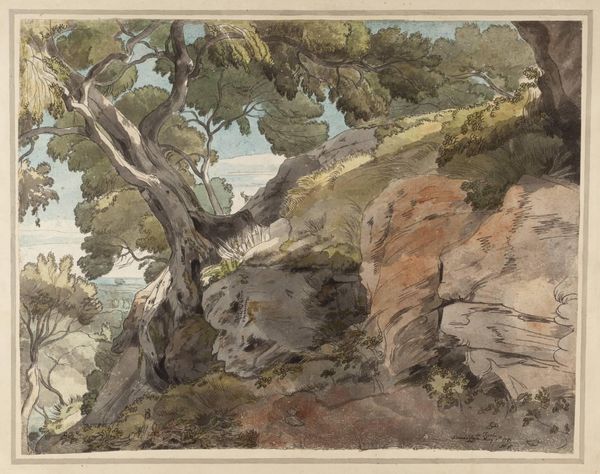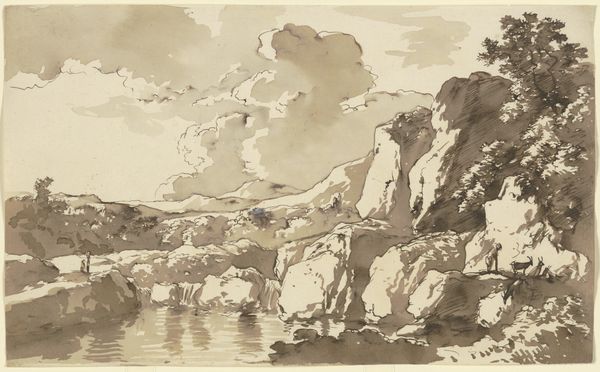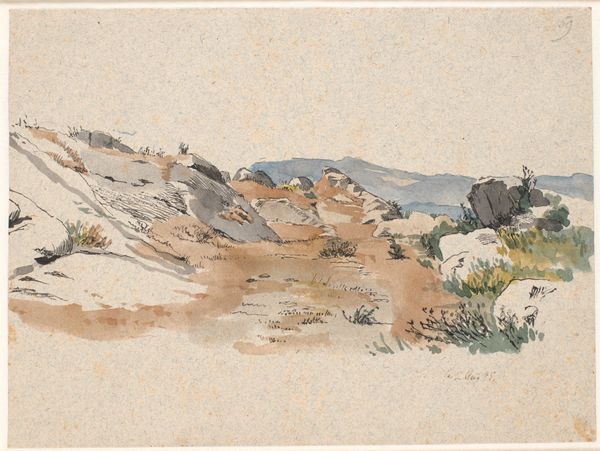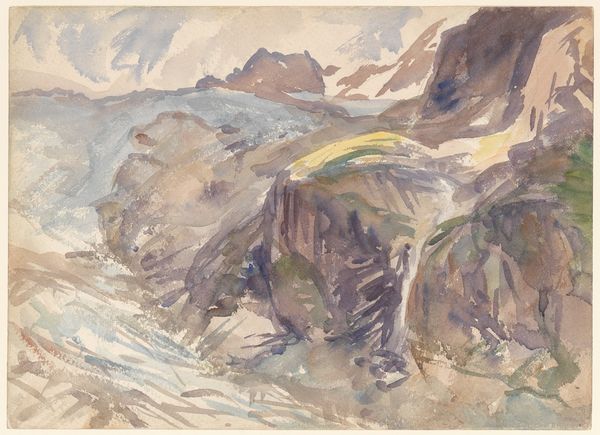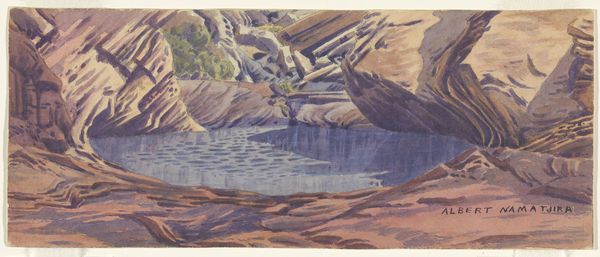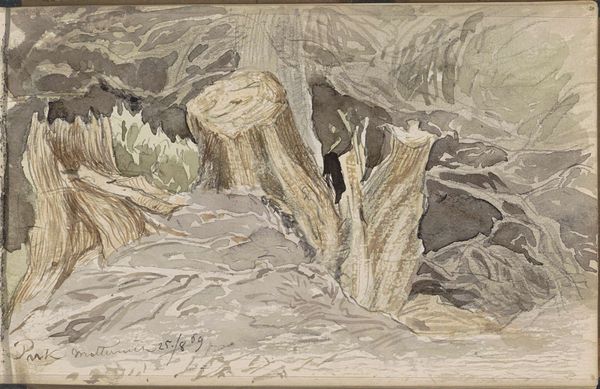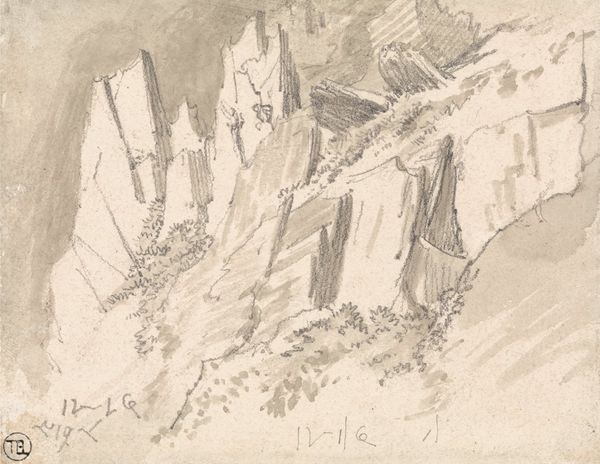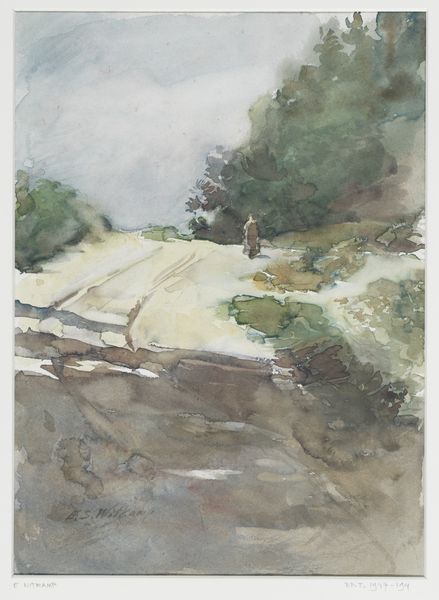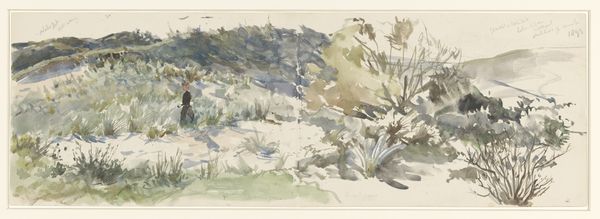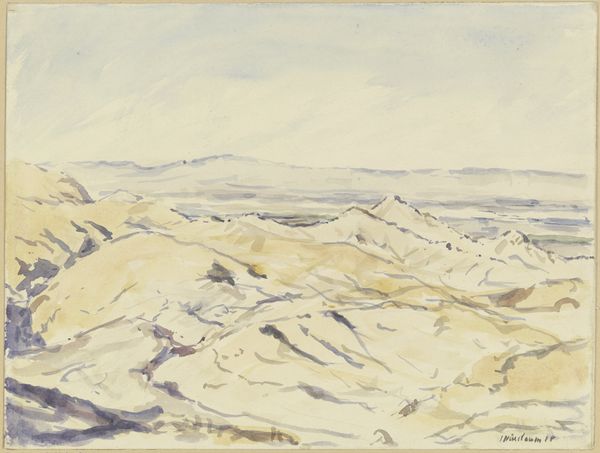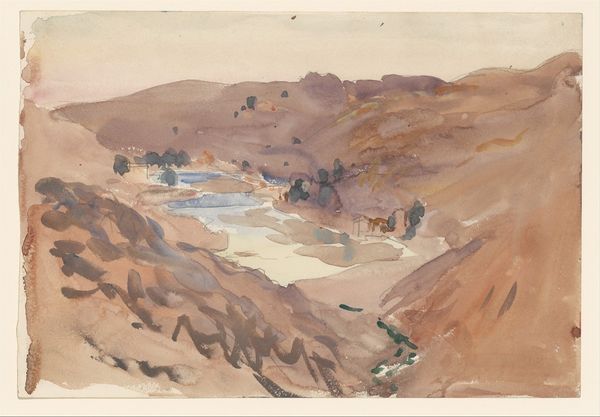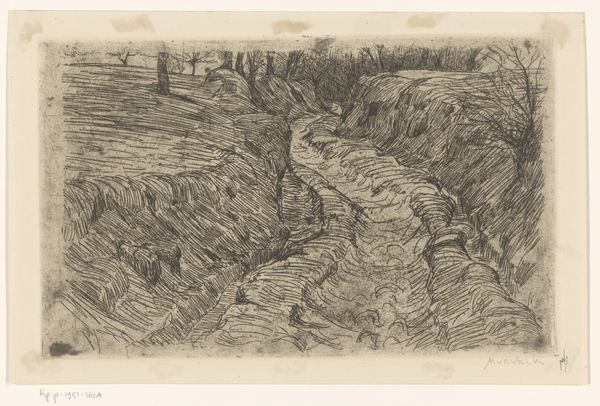
Copyright: Public Domain
Curator: Hermann Lismann's 1912 watercolor, ink, and graphite drawing, “Ploumanac'h,” currently residing at the Städel Museum, offers us a window into a rugged coastal landscape. What strikes you first about this piece? Editor: The somber mood, undeniably. There's a palpable weight in those dark, looming rocks. I immediately think of the precarity of coastal communities facing environmental threats, that constant tension between beauty and looming disaster. Curator: Ah, yes, that tension sings, doesn't it? The artist's layering of washes captures the weight of the stones but then this light sky up top creates breathing room. It's a bit of a dare. The muted palette evokes a raw, natural beauty—you almost feel the chill of the ocean air. It's interesting that, while Lismann certainly utilizes the language of impressionism, this landscape doesn't feel conventionally pretty, which resonates more deeply, no? Editor: Exactly. The conventional 'pretty' often glosses over the realities faced by people living in proximity to natural forces. The composition emphasizes a power dynamic. We, the viewers, are down low, almost trapped among these imposing rocks. This invites reflection on vulnerability and the limits of control when facing nature's grander designs. Curator: The use of mixed media, I think, plays into that rawness as well. The scratching of the ink mimics the texture of granite and creates real grit. While watercolor washes give transparency to capture the ever-shifting coastal atmosphere. It all combines to make something solid and ethereal at once. It's sort of a quiet visual poem. Editor: And the location itself, Ploumanac'h, adds another layer. This region of Brittany is known for its unique pink granite formations. Perhaps Lismann intended for us to consider what it means to capture—and perhaps commodify—such a distinctive place. Who is this art for, and at what cost to the community whose landscape it depicts? Curator: A truly thoughtful angle! It really does invite us to ask ourselves *whose* gaze directs our view. But overall I would describe "Ploumanac'h" as both captivating and thought-provoking, wouldn’t you agree? Editor: Absolutely, it leaves you pondering the complex relationships between humanity, representation, and the enduring power of our environment. Curator: Perfectly put! This has encouraged a deeper contemplation on place and experience. Thank you!
Comments
No comments
Be the first to comment and join the conversation on the ultimate creative platform.
